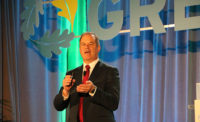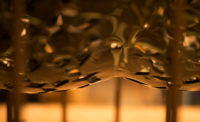The results of two recent studies—one carried out by the New Buildings Institute (NBI), the other by CoStar Group—show that green building standards are not only effective, but also escalate property values. The post-occupancy studies, both released in March, attempted to measure the value of buildings with sustainability features compared to conventional buildings. They also aimed to demonstrate the effectiveness of third-party certification programs, specifically LEED, administered by the U.S. Green Building Council (USGBC), and Energy Star, managed by the Environmental Protection Agency and the U.S. Department of Energy.
One study confirmed that new LEED-certified buildings use less energy than non-certified buildings. Commissioned and funded by the USGBC, the study was conducted by the NBI, a nonprofit organization in the Pacific Northwest that specializes in providing information about sustainable architecture. Researchers compared data on energy use intensities collected from 121 LEED-certified buildings to statistics from an energy survey conducted by the federal government in 2007.
The NBI study found that the median energy-use intensity (EUI, as measured by kBtu per square foot per year) for LEED buildings is 24 percent better than the national average for conventional buildings. When divided into typologies, office buildings demonstrated the most significant difference. LEED-certified offices performed 33 percent better, and those with a Gold or Platinum rating performed 50 percent better. These results underscore one of the study’s other prevailing findings: that, in most cases, buildings perform better as they get higher ratings, between certified, Silver, Gold, and Platinum.
The NBI study results weren’t entirely positive. Surprisingly, the actual EUI performance for LEED-certified, high-energy-use buildings, such as laboratories and data centers, was nearly two-and-a-half times higher than what was predicted during their design. The report calls this “very poor, even on average,” and suggests that performance modeling is in dire need of rethinking. Andrew McNamara, director of new construction services at Bright Power, a New York-based energy consultancy, says he was surprised by the drastic underperformance of some LEED-certified buildings. Projects that were supposed to see energy savings of up to 40 percent actually “underperformed code by 60 percent.” “The NBI study provides a much-needed comparison of energy models to reality,” he says.
The Maryland-based CoStar Group, a provider of commercial property information, undertook a separate study, investigating green building real estate trends by analyzing property values and occupancy rates. The study used a pool of more than 1,300 buildings, representing about 351 million square feet. Results showed that Energy Star buildings on the market commanded an additional $61 per square foot. They also showed that rental rates for Energy Star buildings are $2.40 per square foot higher than those in non-certified buildings—and occupancy rates are 3.6 percent higher. In addition, CoStar discovered that LEED-certified buildings are selling for $171 per square foot more than non-certified buildings. In terms of rental prices, a LEED-certified building fetches an extra $11.24 per square foot.






Post a comment to this article
Report Abusive Comment